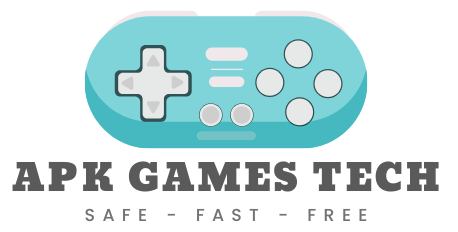Download Angry Birds Friends MOD Free
*Angry Birds Friends* is a physics-based puzzle and live service game developed by Rovio Entertainment Corporation. The title adapts the franchise’s classic artillery gameplay into a socially-driven, competitive format. Its core concept involves players competing against others in weekly tournaments and head-to-head matches to achieve high scores on global leaderboards.
Game Visuals
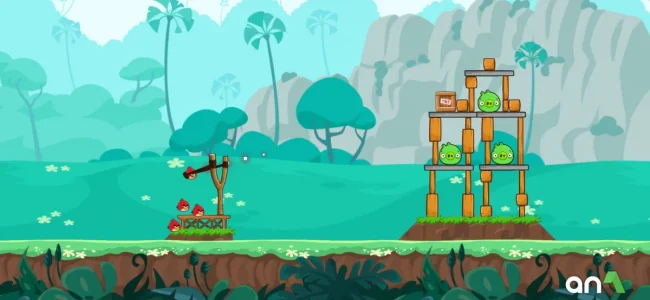
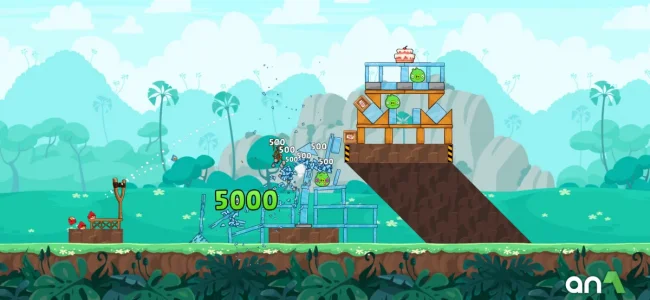
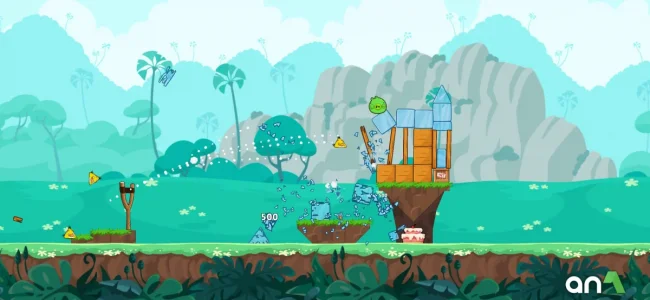
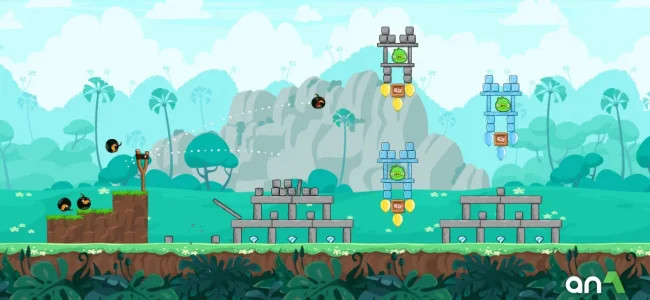
About This Game
Introduction to Angry Birds Friends: A Competitive Evolution
Angry Birds Friends represents a significant strategic evolution of the classic physics-based puzzle formula that defined the early era of mobile gaming. Developed and published by Rovio Entertainment Corporation, this title transforms the familiar, satisfying mechanics of flinging birds into a socially-driven, competitive experience. The game preserves the core gameplay loop of toppling pig-laden structures but reframes this action within a live-service model. This framework is characterized by a continuous stream of new competitive content, global leaderboards, and deep integration with social platforms, a direct legacy of its origins as a Facebook application before its expansion to the Android and iOS ecosystems. The gameplay is anchored by two primary competitive modes: the weekly, multi-level Tournaments and the fast-paced, one-on-one Star Cup: Brawl. This dual structure is designed for long-term player engagement, offering constantly refreshed challenges within a tiered league system. However, this competitive framework is inextricably linked to a freemium monetization model. While the game is free to play, strategic progression, particularly in the upper echelons of the Tournament leagues, is heavily influenced by the use of consumable power-ups. This design choice has led to a prevalent "pay-to-compete" perception, where in-app purchases provide a tangible advantage in achieving high scores.Developer Profile and Release Trajectory
Rovio Entertainment: From Finnish Startup to Sega Subsidiary
Rovio Entertainment Corporation is a Finnish video game developer whose corporate identity is almost synonymous with the Angry Birds franchise. Founded on January 8, 2003, the company achieved global recognition following the launch of the original Angry Birds for iOS in December 2009. A new chapter in the company's history began in August 2023, when Rovio was acquired by the Japanese video game giant Sega for approximately US$776 million. This transaction established Rovio as a subsidiary of the Sega Europe division, placing its entire portfolio, including Angry Birds Friends, under the stewardship of a legacy industry corporation.From Social App to Standalone Mobile Title
The development history of Angry Birds Friends is central to its design philosophy. The title first launched as an exclusive Facebook application named Angry Birds Facebook on February 13, 2012. This platform choice dictated its core architecture, which emphasizes asynchronous competition against friends, social leaderboards, and sharing features. The game was officially renamed to Angry Birds Friends on May 23, 2012. Recognizing the shift in the gaming landscape towards mobile devices, Rovio ported the experience to Android and iOS, with the mobile version releasing on May 2, 2013. This evolution from a browser-based social app to a standalone mobile title solidified its position as a competitive, service-oriented entry in the franchise.Gameplay Taxonomy and Core Mechanics
Genre and Classification
Angry Birds Friends belongs to the physics-based puzzle genre, with its core mechanics falling into the artillery subgenre, where players calculate trajectory and power to engage targets. Its fast-paced, score-focused nature also allows it to be classified as an arcade and casual game. Most critically, its structure of continuous content delivery, ongoing server-side events, and persistent player progression firmly places it in the live service category. This classification signifies that the game is not a finite product but an evolving platform engineered for long-term player retention and engagement through both single-player and asynchronous multiplayer modes.The Art of Physics-Based Destruction
The fundamental objective in every level of Angry Birds Friends is the complete elimination of all green pigs. These antagonists are typically sheltered within complex structures composed of materials like wood, glass, and stone. The game's scoring system awards points for destroying pigs and causing structural damage. A significant bonus of 10,000 points is awarded for each bird that remains unused after the level is cleared, a mechanic that heavily encourages efficiency and strategic planning. Player performance is translated into a rating of one, two, or three stars, creating a secondary objective for mastery. The game is controlled through an intuitive touch interface, though the community frequently reports a perceived element of randomness in the physics engine, suggesting that luck can play a role in achieving the highest scores.The Flock: A Roster of Avian Abilities
Strategic success in Angry Birds Friends requires a deep understanding of each bird's unique ability, which is typically activated by tapping the screen while the bird is in mid-flight. The diverse flock provides a tactical toolkit for dismantling the pigs' defenses.- The Blues: A trio of small blue birds that split into three projectiles, making them highly effective against glass structures.
- Chuck: A yellow, triangular bird that accelerates in a straight line at high speed, allowing it to pierce through multiple wooden planks with ease.
- Bomb: A round, black bird that explodes on tap or shortly after impact, delivering the most powerful force against durable stone materials.
- Matilda: A white, egg-shaped bird that drops an explosive egg downwards while launching herself upwards and forwards, enabling two-pronged attacks.
- Hal: A green, toucan-like bird that functions like a boomerang, reversing its direction mid-flight to strike targets from unconventional angles.
- Terence: A massive, dark red bird with immense weight and destructive power, capable of smashing through nearly any material by sheer force.
- Stella: A pink bird that creates a bubble to lift objects and pigs, which can then be strategically dropped to cause chain reactions.
The Competitive Framework: Tournaments and Game Modes
The Weekly Tournament and League System
The flagship mode of Angry Birds Friends is its weekly Tournament, a time-based competition that eschews linear progression for a dynamic challenge. New tournaments, each featuring over 30 new themed levels, begin every Monday, Thursday, and Saturday. To participate, a new player must first complete the first 10 floors of the introductory "Piggy Tower" mode. Player performance is tracked on global leaderboards where individuals are grouped with 40 random opponents of similar skill. A comprehensive league system provides a sense of progression, allowing players to ascend from the Glass League through tiers like Wood, Stone, Bronze, Silver, and Gold to reach the prestigious Diamond League. Advancement is determined by "Trophies" awarded based on final tournament rank, with players in higher leagues risking demotion for poor performance, creating a high-stakes competitive environment.Star Cup: Brawl - Head-to-Head Duels
As a contrast to the long-form tournaments, the Star Cup: Brawl offers a fast-paced, head-to-head competition. This mode pits two players against each other in a direct 1v1 match on a single, randomly selected level. A key feature is the "Winning Chest" mechanic; with each victory, rewards are added to a chest that the player can claim at any time to end their run. However, a single loss results in the forfeiture of the chest and all its accumulated rewards, creating a compelling "push your luck" dynamic. Critically, this mode provides players with free Power-Ups and Special Slingshots for every match, leveling the playing field and placing a greater emphasis on immediate skill rather than resource accumulation.Power-Ups and Monetization
Angry Birds Friends was the first game in the series to introduce power-ups, a feature that is now central to its competitive meta and monetization strategy. These single-use items, such as the velocity-boosting King Sling or the structure-toppling Birdquake, provide significant in-game advantages. Power-ups can be earned in small quantities through gameplay or purchased in bulk using the premium currency, Bird Coins, which are bought with real money. This system is the foundation of the game's freemium model and the source of the community's "pay-to-win" criticism, as a large supply of power-ups offers a clear and often decisive advantage in the resource-intensive Tournament mode.Technical Profile and Platform Considerations
System Requirements and Online Nature
To ensure a stable gameplay experience, Angry Birds Friends requires devices to meet specific technical benchmarks. For the Android platform, the minimum requirement is Android 5.0 or newer. On the iOS side, devices must be running iOS 13.0 or later. A fundamental technical aspect of the game is its reliance on network connectivity. A persistent internet connection is mandatory for all core gameplay features, including participating in tournaments, accessing the Star Cup, and synchronizing progress via a Facebook account. The game does not feature any meaningful offline mode, as all competitive and progression systems are server-based.Community Feedback and Performance
Despite being a mature title, the game's technical performance is a frequent topic of discussion within its player community. User reviews often report performance degradation, including lag and glitches, immediately following the release of new updates. Issues such as loading failures, unexpected crashes, and Facebook synchronization errors are also commonly cited. Rovio supports the game with an active development schedule, deploying new tournament content multiple times a week and releasing periodic versioned updates to address bugs and introduce features. This high update cadence demonstrates a commitment to the game's longevity as a live service, with the development team often acknowledging widespread issues on official channels and deploying patches to resolve them.Angry Birds Friends transforms classic physics-based puzzle action into a socially competitive experience. The game challenges players with continuously updated tournaments and direct multiplayer duels. Mastery of the core mechanics, strategic use of items, and a deep understanding of each game mode are essential for progression. This guide details the gameplay systems, character abilities, and strategic frameworks necessary for achieving high scores and ascending the competitive leaderboards.
Core Gameplay Mechanics
The fundamental gameplay loop of Angry Birds Friends preserves the franchise’s satisfying slingshot formula. Players engage with a physics engine to solve structural puzzles in each level. The primary objective within every stage requires the player to eliminate all green pigs. These pigs reside within complex structures composed of materials like wood, glass, and stone.
Objectives and Scoring System
The game’s scoring system rewards players for several in-game actions. The destruction of pigs grants a primary allocation of points. Players also earn points by demolishing the environmental structures. A significant bonus of 10,000 points rewards the player for each bird remaining unused after the level’s completion. This system encourages efficiency and maximal destruction. A player’s final score translates into a rating of one to three stars, signifying their performance on that challenge.
The Slingshot Controls and Physics
Players control the game through an intuitive touch-based interface. The player taps and holds a bird on the slingshot. Dragging a finger backward determines the launch’s power and trajectory. A dotted line assists the player by visualizing the bird’s initial flight path. Releasing the finger initiates the launch. The game’s physics engine governs the interaction between birds and structures, though players often report a degree of randomness that can influence outcomes on otherwise identical shots.
The Avian Arsenal: Bird Abilities
Strategic success depends on the correct application of each bird’s unique ability. A player can activate most special skills by tapping the screen during the bird’s flight. Red possesses no special ability but offers reliable direct impact. The Blues split into three smaller birds, which are highly effective against glass materials. Chuck accelerates at high speed, allowing him to pierce through multiple wooden planks. Bomb explodes on contact or upon a player’s tap, which is a powerful tool against stone structures. Matilda drops an explosive egg downwards while launching herself upwards, creating two points of impact. Hal reverses his flight path, acting as a boomerang to strike targets from behind. Terence is a massive bird with immense destructive force but has no activatable skill. Bubbles inflates to a large size, pushing objects away in tight spaces. Stella creates a bubble that lifts objects before dropping them, enabling unique structural takedowns.
Power-Ups and Consumable Items
Angry Birds Friends introduced power-ups to the series, a feature that significantly impacts its competitive modes. These single-use items offer substantial advantages and can alter the course of a level. The availability of these items creates a strategic layer related to resource management.
Types of Strategic Enhancements
The game features several distinct power-ups. The King Sling enhances the slingshot, launching birds with greater velocity. The Birdquake shakes the entire level, which can destabilize and topple weak structures. The Wingman summons a large, exceptionally destructive bird for a single, powerful shot. The Scope power-up provides a full aiming trajectory, revealing the bird’s exact landing point. The Boombox item allows a player to launch and parachute a TNT crate into a specific location. Each item provides a clear advantage when applied to the correct puzzle.
Acquisition and Strategic Use
Players can acquire power-ups through multiple channels. The game awards small quantities for completing in-game activities. Players may also purchase power-ups in bundles using the premium currency, Bird Coins. The powerful nature of these items heavily influences tournament outcomes, as players with larger stockpiles can overcome difficult levels more easily. This mechanic establishes a direct link between resource availability and competitive potential.
Navigating the Competitive Game Modes
The gameplay experience centers on two primary competitive arenas. The Weekly Tournament provides a persistent challenge against a global player base, while the Star Cup: Brawl offers fast-paced, direct duels. Ancillary modes serve as an introduction to the game’s mechanics and a source for daily rewards.
The Weekly Tournament Structure
The Tournament is the game’s main competitive mode. New tournaments begin every Monday, Thursday, and Saturday, each featuring over 30 new themed levels. Access to this mode requires progression; a new player must first complete the 10th floor of the Piggy Tower. Performance is tracked on global league leaderboards, where players compete against a group of 40 similarly skilled opponents.
The League System Progression
The Tournament utilizes a tiered league system to create a sense of progression. All players start in the Glass League and can advance through Wood, Stone, Bronze, Silver, Gold, and the elite Diamond League. At the end of a tournament, a player’s rank determines their gain or loss of Trophies. In higher leagues, players finishing in the bottom half of their group lose Trophies, risking demotion to a lower tier. This system demands consistent high performance to maintain or advance one’s rank.
Star Cup: Brawl – A High-Stakes Duel
The Star Cup: Brawl mode pits two players against each other in a one-on-one match. A single, randomly selected level constitutes the entire match, with the higher score determining the winner. Each victory adds rewards to a “Winning Chest.” The player can claim these rewards at any time, but a single loss forfeits the chest and all its contents. This creates a “push your luck” dynamic. Crucially, this mode provides players with free power-ups for every level, placing the focus entirely on skill and risk management rather than resource reserves.
Foundational and Daily Modes
The game includes other modes that support the core competitive experience. The Piggy Tower functions as a single-player campaign and a mandatory tutorial to unlock the main tournament. Blue’s Tallest Tower is a daily event where players complete levels to earn materials, which they use to construct a tower for escalating rewards.
Strategies for Competitive Success
Achieving a high rank in Angry Birds Friends requires a combination of precise aim, deep mechanical knowledge, and effective resource management. Players can adopt specific strategies to improve their performance as they progress from novice to expert.
A Strategic Gameplay Walkthrough
- Master the Fundamentals in Piggy Tower: A new player’s initial objective is to complete the first ten floors of the Piggy Tower. This campaign unlocks the Tournament and serves as an essential training ground. Players should use these levels to learn each bird’s unique trajectory and special ability.
- Conserve Early Resources: The game provides an initial set of power-ups. Players should save these consumables for competitive Tournament levels, where their impact on score and rank is far more significant.
- Practice the “No Power-Up” Method: To build pure skill, players should attempt to complete tournament levels without assistance. This approach forces a deeper understanding of the physics puzzles. Studying online video walkthroughs of “no power-up” solutions can reveal advanced techniques for difficult stages.
- Utilize Power-Ups Strategically: When a power-up is necessary, its use should be deliberate. Players must analyze a level to identify the key structural weakness or the most opportune moment to deploy an item for maximum point gain.
Advanced Techniques for Score Maximization
At the highest levels of competition, clearing a level is insufficient; score maximization becomes the primary goal. Players should search for opportunities to create large chain reactions, as toppling an entire structure with one bird yields more points than eliminating pigs individually. Prioritizing the preservation of birds is critical. The 10,000-point bonus for each unused bird often decides the winner in high-stakes leaderboards. Furthermore, mastering birds with a high skill ceiling, such as Hal’s boomerang ability or Matilda’s precise egg drop, allows players to solve puzzles in unconventional ways and achieve scores that are otherwise unattainable.
